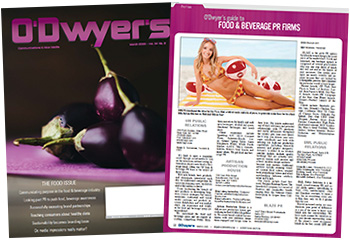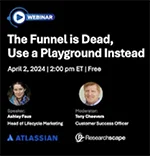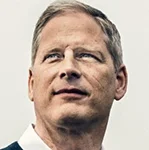 Dustin Siggins Dustin Siggins |
The biggest challenge of PR isn’t getting clients in the press. It isn’t proving a client’s value to a reporter or increasing that client’s brand value to their customers and shareholders. It’s getting a client to see the real value of earned media, of pro-actively telling their story to reach and influence their target markets.
Our industry is so intangible that many people don’t engage in earned media until a crisis hits. And then it’s too late. The deluge of negative stories wasn’t countered through an effective brand strategy beforehand, and the prospective client lacks necessary relationships with media gatekeepers to craft an effective counter-narrative.
 |
| This article is featured in O'Dwyer's Mar. '20 Food & Beverage PR Magazine. |
We have a hard sales job. And it’s only getting more difficult as measuring the value of earned media becomes more complex and as news deserts increase. The 20th century PR trends are giving way quickly to an era of rapid technological disruption, and PR professionals have to keep up.
Two challenging trends
One of the most important areas of client education is countering the idea that “impressions” are a worthwhile measure of earned media success. A client’s quote is never going to reach everyone who reads the New York Times, yet some leading organizations still imply that a single placement is going to reach every reader, listener or viewer of a particular outlet.
“The way we measure digital editorial content in 2020 is still a holdover from the last century,” Memo CEO Eddie Kim said. “A better way to understand impact is to calculate what it would cost the brand to create the value themselves—building the content, providing the platform, and then driving target audiences to the content.”
“How would you recreate the value of an earned placement in the Wall Street Journal, which receives 10,000 executive readers for an average engaged time of nearly two minutes?” Kim asked. “If you were to target executives on LinkedIn, it would cost you anywhere from $5-10 per click, which means it would cost a brand $100,000 from start to finish!”
Another challenge is the nationalization of media. iHeartMedia’s recent layoffs only impacted a fraction of the company’s five percent market share, but the layoffs mostly affected small markets. This continued the trend of creating local news “deserts” in exchange for generalized national news and perspectives, and it continued to make the job of getting local earned media harder.
Solution: Establish the human connection
The solution to all of this technological-based change is the human connection. We must earn trust, get personal and deep with client needs, and then create real value that resonates with a client’s goals.
Earn trust before signing a contract by being open and forthright about the reality of earned media. My firm has a good-faith pledge—not a guarantee of success—and we forthrightly explain how we work with clients. By engaging in your own variation of former FBI hostage negotiator Chris Voss’ rapport-building accusation audit before a prospect can raise the same objections, you reduce a prospect’s emotional fear and hesitation, and increase their level of trust in your professionalism, integrity and ability to perform.
Greater trust can also be built through the calibrated question strategy. These “what/how” questions open doors to identifying, understanding and solving a prospect’s challenges. Which is also step number two.
Get deep and personal with the client’s needs. Tactics like press releases and video are often necessary, but are they done ad-hoc or in complete integration with the company’s overarching mission and goals? Does the communications strategy have buy-in from senior staff and junior staff you’ll work with every day? Touchdown Strategies’ James Davis has developed a proprietary method of assessing a client’s communications operation. “Conversations about performance too often focus on tactical decisions and execution, rather than assessing the capability on a strategic level,” he explained. “We help organizations uncover why decisions are made by analyzing the current capabilities, processes, practices and the culture. Then, we develop a tailored plan to drive continuous improvement.”
At the end of the day, it’s the tailored plan—not a generic solution which can be copied and pasted into a contract—which will produce results and turn a hesitant client into a repeat customer. But a key part of that is …
Being able to explain why you picked specific outlets for earned media. Turning our intangible industry into a hard deliverable through quantitative and qualitative analysis is critical to proving value.
We recently had a client ask why a media list had only one national outlet. We reassured the client that success in industry and regional outlets is a better use of time and money, and will build the client’s nascent brand for national media in 2021.
“The value of earned media depends entirely on a client's target market and the outlet's following,” said Uriah Kiser, Publisher of the Virginia-based online news portal Potomac Local. “Local news is seen by the national media as from a bygone era, but entrepreneurs are filling the gap. A 2019 Knight Foundation-Gallup study found that local journalists are seen as more caring, trustworthy, and unbiased compared to national media, and 60 percent of Americans believe local news accomplishes most of the key tasks of informing communities.”
“The Washington Post has many more readers than Potomac Local, but our readers trust us to report what’s important to the local community,” Kiser concluded. “The same is true for industry trade publications and other outlets which specialize geographically or by industry.”
Finally, create multiple values from each placement through tactical synergy. A Super Bowl-winning lineman doesn’t just make a good block; he also knows where his quarterback and running backs are, where they’re going, and what the play is. The placement that can be reposted or republished, repurposed as a driver of traffic to the client’s website via social media and a newsletter, and/or turned into handouts at a lecture or conference creates maximum return on investment. It’s a win-win-win for the client, media gatekeepers and you.
Bill Collier of Intellz Inc. has two other tactics he uses for clients like the American Medical Association and the Republican National Committee. “You should have three angles on your earned media announcements so you can remind people multiple times without being repetitive. Additionally, developing relationships with mid-level industry bloggers gives your placements tremendous SEO and credibility boosts, as well as massively increase reach.”
Changing with the times
Technology is changing the way most industries function. PR is no different. The question is whether individual practitioners and companies will get with the times or go the way of the dodo.
***
Dustin Siggins is CEO of Proven Media Solutions and a business columnist. He was previously Director of Communications for a national trade association.


 Abandon traditional content plans focused on a linear buyer progression and instead embrace a consumer journey where no matter which direction they travel, they get what they need, stressed marketing pro Ashley Faus during O'Dwyer's webinar Apr. 2.
Abandon traditional content plans focused on a linear buyer progression and instead embrace a consumer journey where no matter which direction they travel, they get what they need, stressed marketing pro Ashley Faus during O'Dwyer's webinar Apr. 2. Freelance marketers and the companies that hire them are both satisfied with the current work arrangements they have and anticipate the volume of freelance opportunities to increase in the future, according to new data on the growing freelance marketing economy.
Freelance marketers and the companies that hire them are both satisfied with the current work arrangements they have and anticipate the volume of freelance opportunities to increase in the future, according to new data on the growing freelance marketing economy. Home Depot's new attempt to occupy two market positions at once will require careful positioning strategy and execution to make it work.
Home Depot's new attempt to occupy two market positions at once will require careful positioning strategy and execution to make it work. Verizon snags Peloton Interactive chief marketing officer Leslie Berland as its new CMO, effective Jan. 9. Berland succeeds Diego Scotti, who left Verizon earlier this year.
Verizon snags Peloton Interactive chief marketing officer Leslie Berland as its new CMO, effective Jan. 9. Berland succeeds Diego Scotti, who left Verizon earlier this year.  Norm de Greve, who has been CMO at CVS Health since 2015, is taking the top marketing job at General Motors, effective July 31.
Norm de Greve, who has been CMO at CVS Health since 2015, is taking the top marketing job at General Motors, effective July 31.


 Have a comment? Send it to
Have a comment? Send it to 
No comments have been submitted for this story yet.